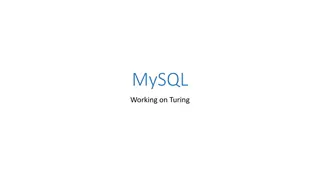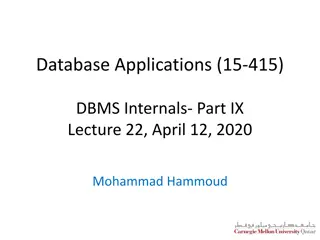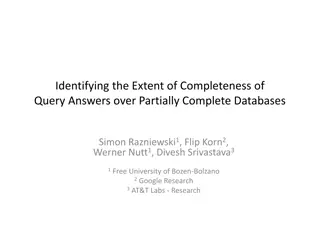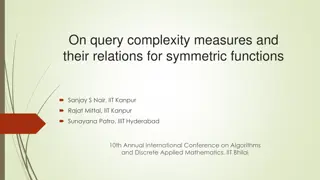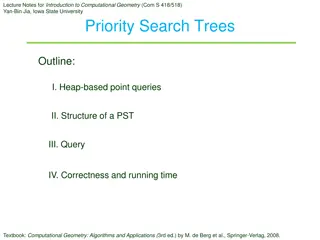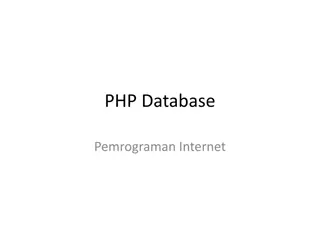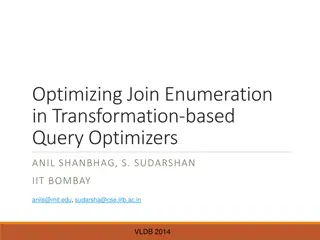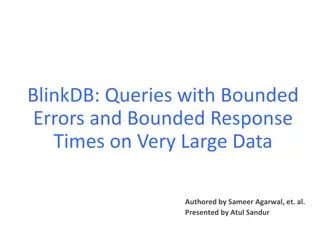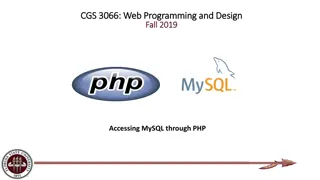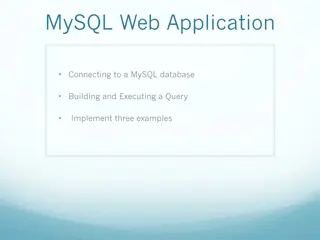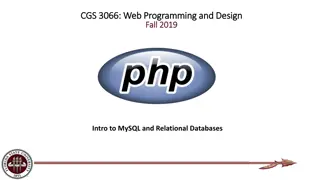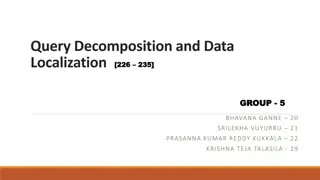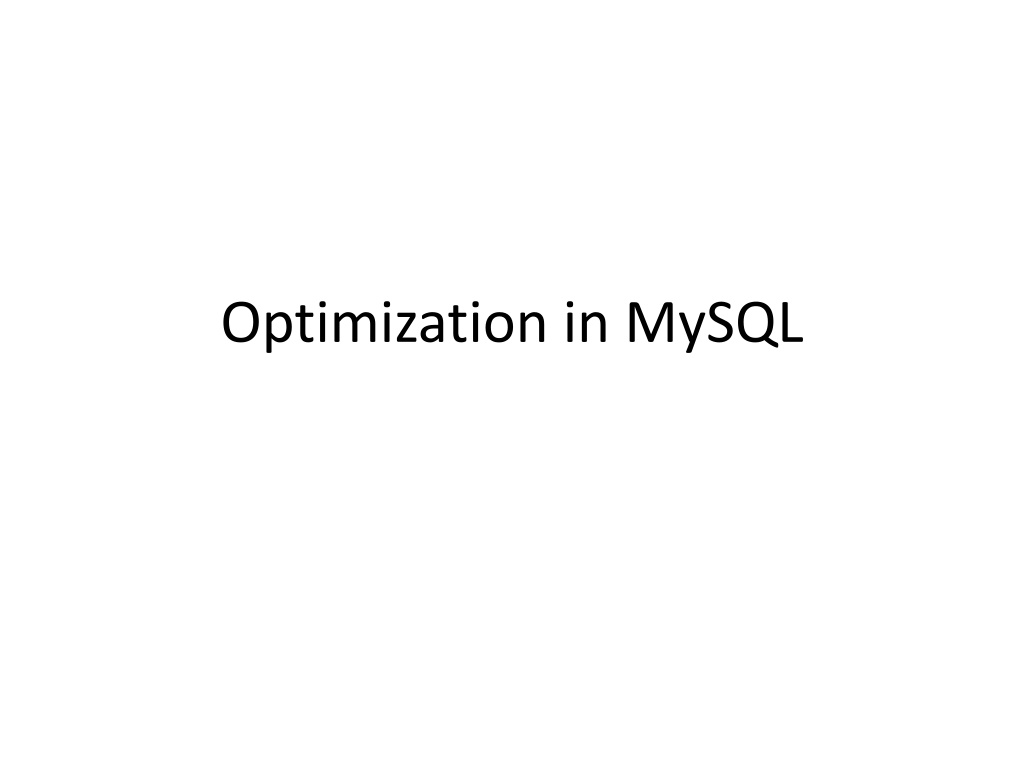
Optimizing MySQL Database and Query Performance
Learn key aspects of optimizing your MySQL database, including structuring tables, using appropriate indices, and leveraging automatic optimizations. Discover how to optimize queries for better performance and understand examples of query optimizations. Improve your database performance by making informed decisions based on provided insights.
Download Presentation

Please find below an Image/Link to download the presentation.
The content on the website is provided AS IS for your information and personal use only. It may not be sold, licensed, or shared on other websites without obtaining consent from the author. If you encounter any issues during the download, it is possible that the publisher has removed the file from their server.
You are allowed to download the files provided on this website for personal or commercial use, subject to the condition that they are used lawfully. All files are the property of their respective owners.
The content on the website is provided AS IS for your information and personal use only. It may not be sold, licensed, or shared on other websites without obtaining consent from the author.
E N D
Presentation Transcript
Database Optimization A key aspect for optimizing your DB is making sure the tables are well structured: The columns have the right data type The columns corresponds with your application usage (e.g. a table which updates frequently often has fewer columns) Define the buffer pool size according to your available memory
Query Optimization Use indices wherever appropriate To avoid wasted disk space, construct a small set of indexes that speed up many related queries used in your application Especially important for joins Minimize the number of full table scans Avoid transforming the query in ways that make it hard to understand The optimizer does some of the transformations automatically Use the EXPLAIN statement to retrieve the query execution plan, and adjust your indices/query accordingly The execution plan might depend on tables statistics. Run ANALIZE statement to update the statistics of a certain table Even queries which run fast could benefit from the optimization, by making your application more scalable
Automatic Optimizations MySQL automatically optimizes your queries, to achieve faster execution Example for WHERE statement optimizations: Detecting conditions which never apply Filter unnecessary values in each table before JOIN Constant expressions are evaluated once
Example SELECT year, Max(length) FROM Movies WHERE genre = "comedy GROUP BY year HAVING Max(length) > 100 How can we change this query to improve performance? Move the predicate in the HAVING clause to the WHERE clause, resulting fewer tuples in each group
Example(2) SELECT year, Max(length), count(*) FROM Movies WHERE genre = "comedy GROUP BY year HAVING Max(length) > 100 Would the optimization we proposed still be valid for the above query? No, because we need to count all comedies in each year including short ones.
Example 2 Starsln(title, year, starName) Movies(title, year, length, genre, studioName) CREATE VIEW Movies0f1996 AS SELECT * FROM Movies WHERE year = 1996; SELECT starName, studioName FROM MoviesOf1996 JOIN Starsln WITH (year, title);
Example 2(2) Logical execution plan: How can we improve it? By applying the rule C(R S) = C(R) S
Example 2(3) Improved execution plan:
NoSQL DBMS Originally referred to non-SQL database Now interpreted as Not only SQL (indicating that SQL syntax might also be supported) Some of the main types of NoSQL DBMS: Key-value store Stores a dictionary, allowing quick lookup Document store A document is an encoded data In addition to key lookup, the DBMS exposes an API for retrieving document by content Graph Meant for storing a data which represent a graph structure (node, edges and associated data) Exposes a graph query language
Exam Date: Moed A: 19/2/2020 Moed B: 6/4/2020 The exam will consist of 3 parts. The main topics of each part would be as follows: 1. SQL queries, views, relational algebra 2. Functional dependency and relational decomposition 3. Query execution and optimization, indexing In general, all topics taught in class might appear in the exam, excluding web programming
Project Due date: 26/1/2020 Don t wait for the last minute deploy your application in advance, to make sure it is working Focus on making your queries interesting and efficient Remember: A simple user interface is sufficient


